The Campaign of 1805 in Germany
day by day
In July and August 1805, the third coalition against France was formed, bringing together, around England, Russia, Austria, Naples and Sweden. In response, Napoleon I abandoned his plans to invade England at the end of August and rushed towards southern Germany. This would be one of his most glorious campaigns.
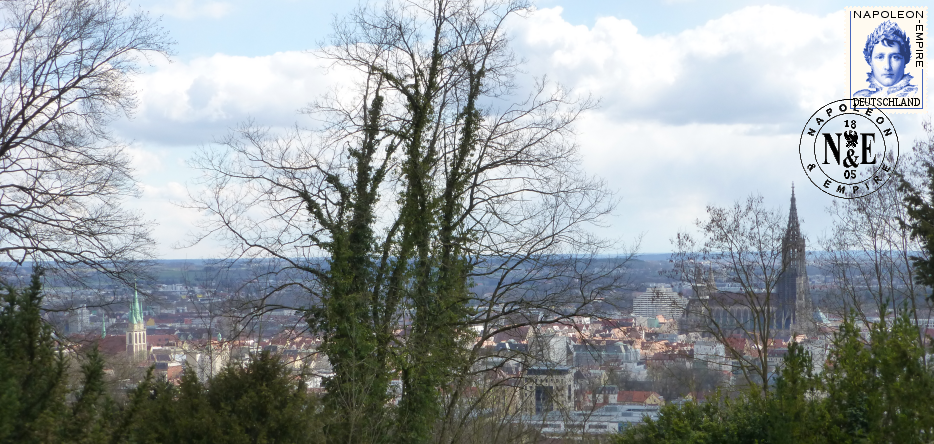
We will detail below the Emperor's wanderings day by day, illustrating them with photographs showing the current appearance of the places of this campaign. The city of Ulm, heavily destroyed during the Second World War, unfortunately does not offer much to see that could resemble the city captured by Napoleon. On the other hand, the site of the battle of Elchingen and that of Austerlitz were relatively spared, due to their rural location. The iconography will be enriched with each future stay we will be able to make in these places, today located in Germany, Austria and the Czech Republic.
September 1805
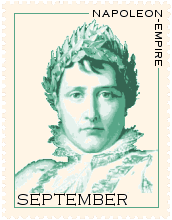
- September 24 - Napoléon I left Saint-Cloud at 4 o'clock in the morning, to join the Grande Armée. He passed through La Ferté-sous-Jouarre, on the banks of the river Marne .
- September 25 - He had lunch at Bar-le-Duc , and arrived in Nancy around 9 p.m.
- September 26 - He arrived in Strasbourg , where he would stay until October 1st. He stayed at the Palais des Rohan, which had become an Imprial Palace .
October 1805
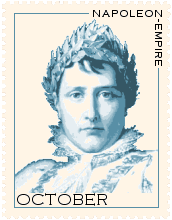
- October 1st - Napoleon left Strasbourg at 11 a.m. for Ettlingen, 70 kilometers to the northeast, where he spent the night.
- October 2nd - He continued east to Pforzheim, then reached Ludwigsburg at 11 p.m., where he stayed at the palace [Residenzschloss] of the Elector of Württemberg. He stayed there until the day after.
- October 4 - He went to Stuttgart, 12 kilometers away, to visit Elector Friedrich Wilhelm Karl von Württemberg, a colossus of 2.11 meters (6 ft 11 in) and about 200 kg (440 lb 14.8 oz) , to whom he promised the kingship in exchange for his support.
- October 5 - After visiting the Asperg Fortress [48.91028, 9.13833], he had another interview with the Elector and then left for Schwäbisch Gmünd, where he slept.
- October 6 - He passed through Aalen where he stopped at 9 o'clock at the Krone Post Inn [Marktplatz 4] [48.83766, 10.09284], then went to Nördlingen, 56 kilometers east of Gmünd. He made a quick return trip to Donauwörth to inspect the Danube [Die Donau] .
- October 7 - He returned to Donauwörth to direct the river crossing there. He would stay in this city for two days.
- October 8 - Inspection trips to Burgau and Pfaffenhofen an der Roth.
- October 9 - Napoleon left Donauwörth for Mertingen and then Wertingen, where a victorious battle had taken place the day before, and reached Zusmarshausen at 2 p.m. There he reviewed Joachim Murat's cavalry, then settled in for the night at the coaching inn .
- October 10 - He left around 4 p.m. and arrived three hours later in Augsburg, where he slept at the home of the Elector of Trier Clement Wenceslas of Saxony (Klemens Wenzel von Sachsen), at the Fronhof Palace [48.37206, 10.89446]. He remained in Augsburg until the day after.
- October 12 - Napoleon harangued the II Corps of the Grand Army on the Lech Bridge [ a famous painting by Pierre-Claude Gautherot illustrates this episode]. He left at 10:30 p.m. in terrible weather, crossed the Lech River and slept in Burgau .
- October 13 - In the morning he was in Günzburg , then he went to see Murat in Pfaffenhofen an der Roth, where he slept at the Äußere Taverne [48.35463, 10.16076] on Hauptstrasse [current no. 28].
- October 14 - That day occured the Battle of Elchingen. The Emperor settled at dawn at the Schlössle of Offenhausen [wrongly called "Hildenhausen Castle" in period texts] [48.40320, 10.02038] from where he observed the fighting. Then he followed the Danube River as far as the Elchingen bridge, 7 kilometers downstream. On the evening of the battle, the Emperor lodged at the presbytery of the village of Oberfahlheim, 5 kilometers to the east, south of the Danube. He modestly dined on an omelette and a bad beer, for want of Chambertin, which he had never lacked, even in Egypt...
- October 15 - He settled early in the morning at the Elchingen Abbey , which, located on a plateau , overlooked the village of Ober-Elchingen and the Danube valley (he would stay there until the 21st). The day was devoted to an inspection at the foot of the Michelsberg , then at Haslach [Unterhaslach / Oberhaslach ] [48.44301, 10.01764] where he took refuge in a farm, finally on the Frauenberg [Safransberg] .
- October 16 - He made Ulm cannonaded from the Michelsberg.
- October 17 and 18 - The siege of Ulm continued.
- October 19 - He received at 2 p.m. the Austrian general Karl Mack von Leiberich , who came to negotiate the conditions of a surrender.
- October 20 - After five days of siege, Ulm surrendered. At the foot of the Michelsberg, Austrian soldiers paraded for five hours in front of Napoleon, the captured infantry throwing down their weapons and the cavalry abandoning their horses. The Austrian officers were allowed to keep their weapons and return home, in exchange for their word not to fight against France again.
- October 22 -The Emperor left Elchingen Abbey to return to Augsburg, still at the home of the Elector of Trier. He ordered the city's fortifications to be rebuilt.
- October 24 - He left Augsburg for Munich [München] , a city of 40,000 inhabitants on the Isar River and capital of the Electorate of Bavaria [Kurfürstentum Bayern], where he arrived at 9 p.m.
- October 28 - He left Munich heading east, passing through Hohenlinden and settling for the night in Haag in Oberbayern [48.16667, 12.18333].
- October 29 - Having left before daybreak, still heading east, Napoleon reviewed the III Corps at Mühldorf [48.24556, 12.52278], then passed through Burghausen [48.17000, 12.83000] and reached Braunau am Inn at 5 p.m. [this Austrian town would later be sadly famous for having been the birthplace of a certain Adolf Hitler in 1889]. He set up his HQ there in the house of the merchant Josef Schüde [at the current No. 34 Stadtplatz] [48.25752, 13.03537], and would stay there for the next two days.
November 1805
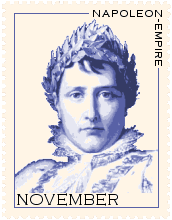
- November 1st - Napoleon left Braunau, then after having lunch in Altheim [at today's Hauptplatz 33] he reached Ried im Innkreis, 37 kilometers east of Braunau. He spent the night in a house on Hauptplatz [today's post office, at no. 6].
- November 2nd - He went to Haag am Hausruck [48.18510, 13.64131] [however Garros and Tulard indicate "Haag near Wels", so it would be at 48.17335, 13.92119].
- November 3rd - He left early in the morning for Lambach [48.09175, 13.87484], where he stayed at the Benedictine monastery [Stift Lambach].
- November 4 - He left Lambach at 8 o'clock, had lunch in Wels and arrived in Linz in the evening, settling in the city's Palace of States [Landhaus]. He would stay there until the 9th.
- November 8 - The Austrian general Ignácz Gyulay came to request a fifteen-day armistice, which was refused.
- November 9 - Napoleon left Linz in the evening heading east, and slept either in Enns or Strengberg, depending on the author.
- November 10 - He arrived late in the morning at the Benedictine abbey of Melk [Stift Melk], which the French had seized on the 7th.
- November 11 - He left Melk abbey for Sankt Pölten, a former monastery of the regular canons of Saint Augustine which had become the seat of the bishopric since 1785, 25 kilometers further east.
- November 13 - He received General Gyulay again in Sankt Pölten, then went to Purkersdorf , 16 kilometers from the center of Vienna [Wien]. It was there that he learned that the capital of the Austrian Empire had been taken; he then went to Schönbrunn Palace , the summer residence of the ruling family of the Holy Roman Empire.
- November 14 - He entered Vienna , then returned to sleep in Schönbrunn, where he would also stay the next day.
- November 16 - He left Schönbrunn, passed through Vienna and in terrible weather headed for Hollabrunn , 52 kilometers north-northwest of the capital, to the north of which a battle (also called Schöngrabern ) was taking place between 7,300 men of the Russian general Pyotr Bagration (Пётр Иванович Багратионv) and 20,600 men of Joachim Murat.
- November 17 - He arrived in the morning at Znaim [Znojmo, today in the Czech Republic] , on the Thaya River [Dyje] in southern Moravia. He stayed in the house of the bourgeois Schultz [known today as the Ugart Palace, it is located on the Upper Square, at No. 9] [48.85687, 16.04788]
- November 19 - He left for Pohrlitz [Pohořelice], 29 kilometers to the east-northeast, where he slept in the rectory.
- November 20 - He arrived at 10 a.m. in Brünn [Brno] , the capital of the Margraviate of Moravia. Then he went to Latein [Brno Slatina], six kilometers to the east, where a cavalry battle had just taken place. In Brünn, Napoleon set up his HQ until November 28 at the Palace of the Governors of Moravia .
- November 21 - He left to study the surroundings of the city, in particular the imperial road from Olmütz [Olomouc], pushing as far as the surroundings of Wischau [Vyškov], 34 kilometers away. On the way back he studied in detail the Bosenitz plateau, south of the road.
- November 24 - He attended Sunday mass in the Church of St. Thomas , which adjoined the Palace of the Governors.
- November 27 - Napoleon received in the morning the Austrian negotiators Count Johann Philipp von Stadion-Warthausen and General Ignácz Gyulay. Then he held a grand review between Losch [Líšeň] and Turas [Brno-Turany] , east of the city.
- November 28 - He received around noon the Prussian Foreign Minister, Count Christian August Heinrich Curt von Haugwitz . Then he went to the post house [Stará Pošta] [49.18515, 16.82630] on the Olmütz road, near the junction with the Austerlitz [Slavkov u Brna] road, south of Posorschitz [Pozořice], to meet Joachim Murat who had established his Headquarters there. Also present were Marshals Jean-de-Dieu Soult and Jean Lannes, who had a violent altercation. A tactical retreat towards Brünn was decided.
- November 29 - He positioned himself at the Gandia Inn [Osada Kandie] [49.18722, 16.70611] , west of Kritschen [Podoli]
- November 30 - He set up his HQ at Horka [49.18111, 16.72839] , a former quarry at the eastern exit of Bellowitz [Bedřichovice] and south of Kritschen. After having carried out reconnaissances, such as at the so-called "Santon" hill [49.188397, 16.76375] and at the plateau east of the Goldbach [Říčka] stream , between Pratzen [Prace] and Aujest [Újezd u Brna] , he dictated his proclamation for the following day in his carriage. He slept inside it, in detestable weather, mixing rain and hail.
December 1805
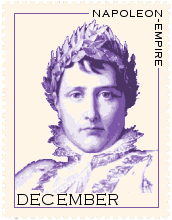
- December 1st - After having observed that the Allies had gained a foothold on the Pratzen Plateau , Napoleon left Horka and took up position 500 meters further east on the Zuran Mound [49.17979, 16.73842] , a former 13th-century Tartar tumulus, northeast of the village of Schlapanitz [Šlapanice]. From this eminence he harangued his troops in the evening [a commemorative monument erected in 1930 displays the text of this famous proclamation ].
- December 2nd - On this memorable day, the anniversary of the Emperor's coronation, the Battle of Austerlitz was fought. Napoleon led the battle until midday at the Zuran Mound, a strategic location offering him a formidable panoramic view . Then he went 6 kilometers to the southeast to the eminence called Stare Vinohrady [49.14821, 16.78609] , at an altitude of 296 meters, which General Dominique Vandamme had just taken. Then he went down six kilometers to the south to the chapel of Saint Anthony in Aujest [49.10898, 16.75688] from where he followed the retreat of the Allies, finally around midnight took his HQ to the post house [Stará Pošta] south of Posorschitz and slept there.
- December 3rd - Early in the morning, Napoleon had a long meeting at the coaching inn with Prince John of Liechtenstein who brought peace proposals. Around 6 o'clock he left on horseback to ride across the battlefield on both sides of the imperial road, then went in the morning to establish his HQ at the castle of Austerlitz ,belonging to Count Dominik Andreas von Kaunitz-Rietberg-Questenberg, where the emperors Francis II and Alexander I (Александр I Павлович Романов) had stayed before the battle. He wrote a proclamation to his soldiers, and addressed them from the balcony of the castle.
- December 4 - Emperors Napoleon I and Francis II met between 2 and 4 p.m. under a lime tree [the original tree was replaced in 1919, and again at the turn of the 21st century] at Spaleny Mlyn (Burnt Mill) in Januv Dvur [49.02473, 16.96277], 16 kilometers south of Austerlitz, to discuss peace. Also present, assisting their respective sovereigns, were Prince Jean of Liechtenstein and Marshal Louis Alexandre Berthier. Napoleon then returned to the Château d'Austerlitz, where he would stay for the next two days.
- December 6 - At the Austerlitz Castle, the armistice between the French and the Austrians was signed by Marshal Berthier and the Prince of Liechtenstein.
- December 7 - Napoleon came back to Brünn, where he would stay until the 11th.
- December 12 - He returned to the Schönbrunn Palace and stayed there until December 27.
- December 15 - At Schönbrunn, Géraud Christophe Michel Duroc, Grand Marshal of the Palace, signed a Franco-Prussian alliance treaty with Count Haugwitz.
- December 20 - The Emperor visited Klosterneuburg Abbey , which overlooks the Danube north of Vienna.
- December 26 - The peace treaty between France and Austria was signed at the Primate's Palace in Pressburg [Bratislava] by Johann von Liechtenstein and Ignatz von Gyulay for Austria and Charles-Maurice de Talleyrand-Périgord for France.
- December 27 - Napoleon visited the hunting lodge at Stammersdorf [48.31201, 16.43005] where he met with Archduke Charles of Austria, then came back to Schönbrunn where he ratified the treaty signed the day before.
- December 28 - He left Vienna, and slept at Melk Abbey.
- December 29 - He was in Passau.
- December 30 - He passed through Schärding, and rested at Braunau.
- December 31 - He reached Munich and settled in the royal palace [Münchner Residenz] . He would remain in the Bavarian capital until January 17, attending the wedding of his adopted son Eugène de Beauharnais to Augusta of Bavaria on the 13th [a painting by François Menageot illustrates this ceremony]. He would return to France in the following days via Stuttgart, Karlsruhe and Ettlingen, reaching Strasbourg on January 22..
 All of Napoleon's movements from 1769 to 1821
All of Napoleon's movements from 1769 to 1821
Photos credits
Photos by Lionel A. Bouchon.Photos by Didier Grau.
Photos by Michèle Grau-Ghelardi.
Photos by Marie-Albe Grau.
Photos by Floriane Grau.
Photos by various authors. Thanks to Mr. Stefan Wengermeier and Mr. Ugo Valfer for their kind contribution..